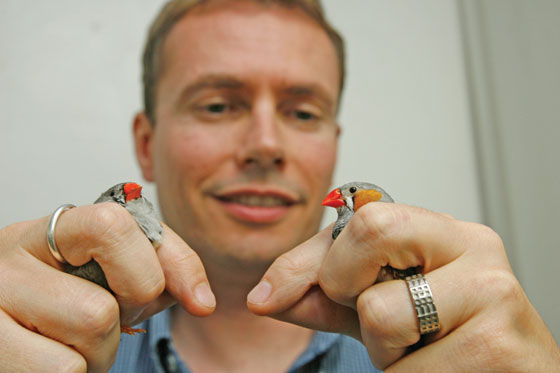Noise disrupts monogamous bonds in birds
Loud levels of white noise have been shown to disrupt monogamous bonds between zebra finches. In a series of on-going experiments, William and Mary biologists are testing the connection between environmental noise and bird behavior.
In their natural setting, zebra finches form strong, monogamous pair bonds, making all the behavior related to mating generally predictable. Bird song, territory squabbles, dances and most male-female interaction are all mating behaviors.
John Swaddle, associate professor of biology, worked with student Laura Page on this experiment, and the two recently published the paper in the July ScienceDirect journal. In their paper, Swaddle and Page show a connection between environmental noise levels and mating behavior. The louder the white noise, the less preference the females show for their pair-bonded males, contrary to normal zebra finch behavior, Swaddle said.
“At the highest level of environmental noise that we had, the female spent just as much time with an unknown male as she did with her pair-bonded male,” said Swaddle. “We think that the soft, whispery type of calls they make at each other to maintain their pair bond is masked by the environmental noise.”
A number of other studies have found that environmental noise levels
do affect bird song and bird behavior, but the William and Mary
research is the first to study the direct implications of that change.
Mating behavior and its disruptions can greatly influence a species,
with evolutionary consequences, although the topic does require more
research, Swaddle said. 
















